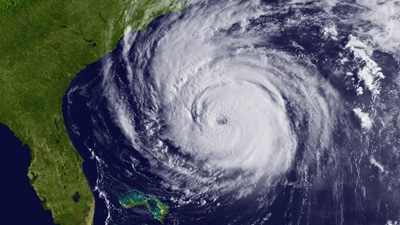June 30, 2011

Drought, floods, thunderstorms and tornadoes brutally hit the United States this spring and hurricane season hasn't started yet.
With people and government budgets suffering from weather costs, what will summer bring?
Meteorologists at AccuWeather.com predict four direct hits on the United States by tropical systems this year. Cleanup costs from those storms will drain already fragile state budgets hit by extreme weather this spring.
The damage this spring broke records. Last week, a report from Aon Benfield, a re-insurance company, estimated $21 or $22 billion in damage from severe weather so far this year.
Aon Benfield's report included uninsured losses from April and May's tornadoes and severe storms. Aon said that in those two months, the amount of severe weather insured losses is three times the U.S. annual average (1990-2010).
The damage total reported by Aon does not include damage from flooding, drought and wildfire.
Flooding of the Mississippi River from Illinois to Louisiana caused between $850 million and $2 billion in damage, John Michael Riley, agricultural economist at Mississippi State, said.
In Minot, N.D., $90 million is the preliminary estimate for flood damage to public facilities. With the flood waters still high, there is no prediction on damage to homes and other private property.
Aon Benfield's damage total also doesn't cover the amount of damage caused by drought and wildfires in the Southwest. The National Climatic Data Center estimates damage between $1 and $3 billion.
The severe weather events included in Aon Benfield's reports, added together with some other unusual weather events, totals between $23 billion and $28 billion. For comparison, the top estimate, $28 billion, is three times the 2011 operating budget for the Environmental Protection Agency.
With four predicted tropical system hits this year, severe weather damage totals will grow.
A tropical system hitting the United States does not necessarily mean that the storm will be a hurricane. A tropical system could be anything from a tropical storm to a Category 5 hurricane. A hurricane is a tropical cyclone with winds more than 73 mph.
How Much Does a Hurricane Cost?
$1.8 billion (2011 adjusted) is the median cost of an Atlantic hurricane that hits land in the United States. The median cost is the most accurate measure of the middle of the data because Hurricane Katrina's immense damage, at $145 billion (2011 adjusted), inflates the average cost of a hurricane to close to $9 billion.
Cost estimates from a hurricane don't include damage the system causes once it moves inland. For example, Hurricane Ike hit land in Texas but Ike's high winds knocked down power lines across North America.
The hurricane costs don't include costs from tropical storms. Slower-moving storms hover over an area, dumping more rain than a hurricane with high winds that quickly passes through.
The National Weather service says that more than half of U.S. tropical cyclone deaths from 1970 to 1999 were caused by inland flooding.
You May Also Like




